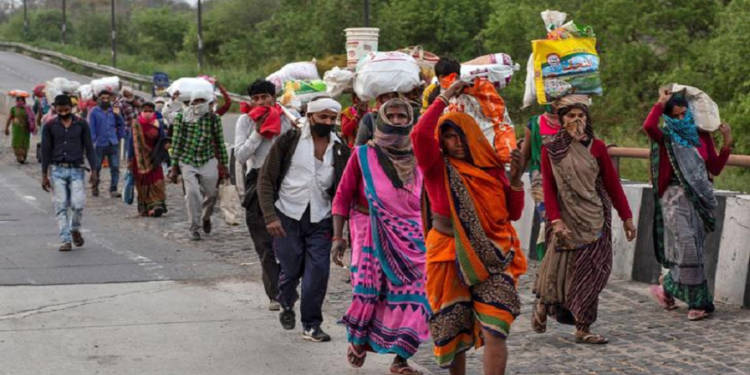The images of lakhs of migrants walking on roads- with a bag in hand and some money in their pocket- to reach home are disheartening. The images and videos of ‘long walks’ of stranded migrant labourers are coming from across the country, Delhi to Kerala, and Gujarat to West Bengal, every state hosts a large number of migrant labourers as these cities and states are economic hub of respective regions.
The ‘long walks’ of migrant labourers has exposed the poor reality of India’s urban planning and housing sector. The country has one of the poorest urban infrastructures, especially for the low-income strata of the society. The poor migrant labourers are forced to live in inhospitable slums.
No city in the world treat their poor as much apathy as the Indian cities. A few months ago, NITI Aayog vice-chairman said that No city in the world developed without building affordable housing for the poor. In the cities around the world, the central government, state government, or the local administration came forward with huge public investment in affordable housing. But in India, so far, this has remained an untouched sector.
And this is the reason the majority of the poor people in the cities are forced to live in filthy slums, where they are vulnerable to diseases. If the poor migrants have access to housing and other public amenities, none of them would have been forced to return to the villages.
India has some of the highest real estate prices in the world, with the price of per unit land in cities like Mumbai and Delhi comparable to that of some of the richest cities in the world like London and New York. And this is not because our cities are as rich as London and New York- in fact, the per capita income in Indian cities in more than 30 times lower than those cities, but because, for years, the government allowed real estate to become an avenue for parking black money.
The exponential economic growth during the UPA era had not reflected in tax to GDP ratio because all the new income, which was in the form of black money, was being parked into real estate and gold. To end the vicious cycle and attack on black money, the government came up with demonetization, and whatever be the criticism of government’s draconian step, the prices of real estate has fallen in last three to four years, while growing at 20-25 per cent rate in all the years before that.
Since the Modi government came to power, it has made efforts to give a boost to affordable housing through schemes like Pradhan Mantri Awas Yojna-Urban, under which the government gives subsidy to low-income house buyers.
In a boost to ‘Housing for All’ scheme, the Modi government has granted 1 lakh crore rupees for affordable housing in last year. Under the ‘Housing for All’, the Modi government aims to build 1 crore houses in urban areas by 2022. The government has also granted infrastructure status to affordable housing to help the developers. “With nearly 4 lakh homes sanctioned at the 42nd CSMC today, the total number of homes sanctioned under this flagship mission with the vision of providing a home to every Indian has crossed 72.5 lakhs,” tweeted Union Housing and Urban Affairs Secretary Durga Shanker Mishra. The scheme was launched in 2015 by PM Modi with the aim to build 1 crore houses by 2022, of this fund for 72.5 lakh homes has been already sanctioned.
But this is not a problem which could be solved in a short period of one or two years. The government has to work on war level to solve the affordable housing and the state governments, local governments must prioritize the sector with big public investment. Only then, the migrants who work as daily wage labourers or those with regular jobs but a meagre income would be able to purchase a house and live with family, unlike the present situation where only the person earning could afford to live in cities because s/he to send money to back home to look after expenses there.


































